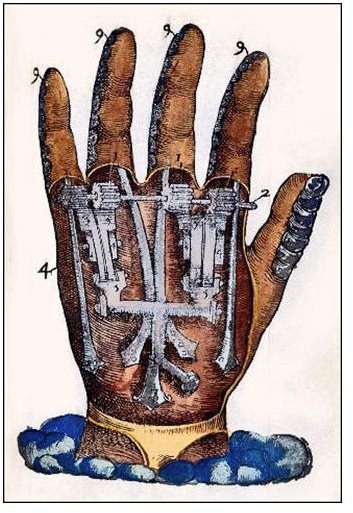A Rule of Thumb? - Brief History of Prosthetics
The Term and Early Prosthetics
It must be noted that the term “Prosthesis” is not only used for arm or leg replacements, but also in reference to false teeth, or any other artificial part for the body: for example, hips, breasts or knee caps.
Not only ancient Egyptians had constructed the pyramids - they also invented a Splint which they made out of wood to replace a missing foot or leg. In a later period this was extended to use copper with the wood for a stronger product. However, it was only in the sixteenth century that a French Doctor introduced amputation as a lifesaving method to the medical profession.
From the history of prosthetics, we learn that the structural support for prosthetic parts had been formed by a pylon constructed with rods of metal. As time progressed, the pylons have been made of composites of a carbon fiber. These are covered with a material which gives them a more “life-like” appearance. There is a socket on these devices for attachment to the patient’s own portions of the limb, which must be very carefully fitted in order to ensure there is no irritation to the natural skin.
Prosthetics in the 20th Century
The attachments can be made in a variety of forms: by means of strapping on a harness system, alternatively belts or sleeves. There is also a type of mechanical suspension, where the prosthetic is attached by a method of suction: a method that is in quite common usage. During the latter part of the history of prosthetics, in the middle of the twentieth century, there was a major improvement brought about for the attachment of leg above the knee prosthesis, in the form of a suction sock.
The use of Prosthetics provides patients with a great degree of independence and enables them not to rely on other people for help with their daily needs. Various limbs can be made to look like their twin limb, as in arms and legs. Today, life goes on as usual for the average amputee; with the modern prosthetics being so advanced, that patients can walk run, ski and even participate in various forms of racing. They are able to live their lives normally and enjoy them to the fullest.
Modern Prosthetics

The present history of prosthetics, now being written, indicates that after many years of dedicated research and development, electrically powered upper limbs are finally available. They are now developed to the degree whereby they are quite realistic in appearance. The “i-LIMB” hand is the first in the world to be made with five digits, so powerful that they can be used to open or close the fingers of a hand, thus enabling round objects to be moved and even lifted. Then there are the prosthetic digits that are equipped with individual fingers and have their own power. These are for usage as replacement for some or all of the fingers, or for part of a hand that requires replacing. A lifelike prosthetic skin is supplied together with the “i-LIMB” hand, called “LIVINGSKIN.”
References and Image Credits
https://www.reachoutmichigan.org/funexperiments/agesubject/lessons/newton/prosthetic05.html
https://www.technologyreview.com/biotech/19759/
https://www.hplusmagazine.com/editors-blog/prosthetics-functionality-self-modification
https://spectrum.ieee.org/automaton/robotics/robotics-software/ilimb_snatches_macrobert_award
